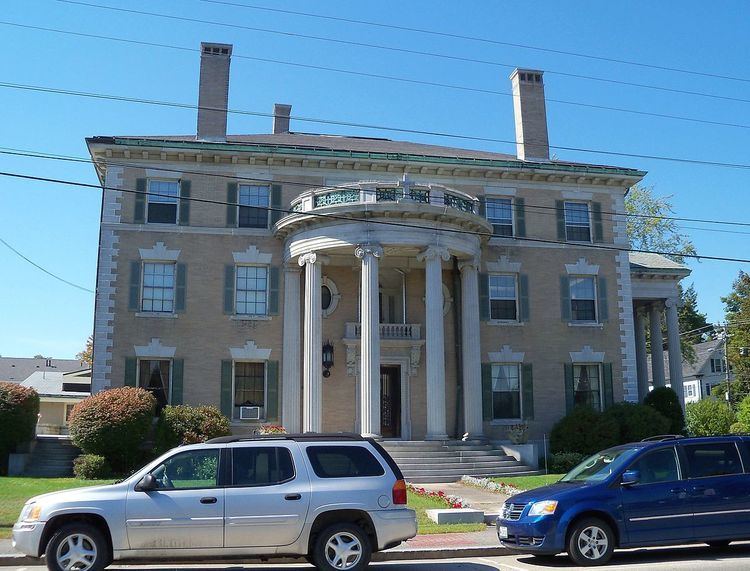Built 1901 (1901) Opened 1901 Added to NRHP 21 November 1977 | NRHP Reference # 77000070 Area 8,000 m² | |
 | ||
Architectural style Colonial Revival architecture Similar Viles Arboretum, Children's Discovery Museum, Capitol Park, Fort Western, Maine State Museum | ||
The Governor Hill Mansion is a historic house at 136 State Street in Augusta, Maine. It was built in 1901 for John F. Hill to a design by John Calvin Stevens, and is one of the state's grandest examples of Colonial Revival architecture. It now serves as an event facility. It was listed on the National Register of Historic Places in 1977.
Description and history
The Hill Mansion stands at the southwest corner of State and Green Streets, between Augusta's downtown area and the state capitol complex. It is a large three-story masonry building, built out of yellow brick with granite trim and a granite foundation. Its roof roof has a projecting cornice with modillions, and its corners have granite quoins. Windows are generally sash set in rectangular openings, with granite sills and keystoned lintels. A beltcourse of stone separates the second and third floors. The dominating feature of the its east-facing facade is a two-story semi-circular portico, supported by Doric columns and topped by a low balcony. The north facade has a temple-fronted porte cochere, also two stories in height, with a full entablature and fully pedimented gable. The interior retains well preserved original high-style decorative elements.
The house was designed by John Calvin Stevens, Maine's highest profile architect of the period, and was built in 1901 for John F. Hill, who was then Governor of Maine. Hill was a prominent businessman with interests in publishing and electric companies, prior to his entry into politics. He had this house built in part as a suitable executive mansion, the state not yet having acquired The Blaine House for that purpose. Hill's children donated the property to the Catholic Oblate Fathers order. After ownership passed through several Catholic organizations, it was sold into private ownership in 2009, and is now used as an event facility and office space.
